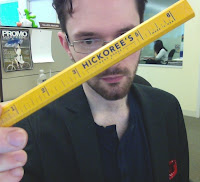On the back of last week’s hugely popular article, “On the Ballpoint: 6 facts that help sell pens,” here are eight more tips on selling pens published in our magazine that you might have missed.
- Consider Direct Mail. Because pens are lightweight and available in different sizes and shapes, using them in direct mail promotions is always an option. (via Scott Pearson, vice president of merchandising for Sweda Company LLC, City of Industry, Calif., from the article “Befriending the Bank: Pitches, products and plans to make the sale with banks and other financial businesses.”)
- Try Anti-fraud Inks. Some suppliers offer pens loaded with special inks that prevent check fraud dependent on ink washing or manipulation. For banking, financial or similar security-themed promotions, these types of features can be a major selling point. (via Kristie Schnier, national director of sales and marketing for Sanford Business-to-Business, Oak Brook, Ill., from the article “Befriending the Bank: Pitches, products and plans to make the sale with banks and other financial businesses.”)
- Lose the Pen Book. “Try to avoid the old pen book that overwhelms clients with a presentation that ‘throws everything against the wall and hope something sticks,'” said Bill Mahre, president of ADG Promotional Products, Lino Lakes, Minn. Mahre recommended instead figuring out what a client is looking for in a pen in terms of price and marketing purpose, then offering a small selection of fitting choices. “There are many options, so if you clearly understand a client’s needs you can create a very specific plan of action which makes it easy for them to say ‘yes.'” (from the article, “Official Business: 5 ways to stand out and succeed with office products.”)
- Personalize Them. “When you add a personalized pen to a stationery piece, or even piece of drinkware, the pen is no longer just an item someone may use for work,” said Pete Catone, business development representative for Polyconcept North America, New Kensington, Pa. “It becomes an appreciated gift.” (from the article, “Official Business: 5 ways to stand out and succeed with office products.”)
- Bundle Creatively (and With Cost in Mind). A small an affordable item, pens can sometimes be tacked onto other orders as a minor upsell. Try to bundle creatively when possible, going beyond “You’re buying notepads? How about something to write on them with?” by using a clever or off-kilter hook (pens and chocolates for writing a love letter to clients, etc.). Keep in mind however, that even at a base, uncreative level, bundling items can reduce the overall cost of an order for a buyer, making it an appealing purchase if say they were going to buy pens from another source anyway, such as an office supply store. (via Jason Fularz, business development representative for Polyconcept North America, New Kensington, Pa., from the article “Official Business: 5 ways to stand out and succeed with office products.”)
- Sell the Experience. To get clients to see pens as more than just a commodity item, sell them as part of a marketing effort rather than as a basic tool. “[Sell] an integrated solution rather than just the product itself,” said Schnier. “Service and the ‘value proposition’ are very important, and when the distributor focuses on the entire experience, it becomes difficult or impossible for the end-user to bid on price alone.” (from the article, “Writing off the Cheap Talk: Seven tips on rising above price wars with writing instruments.”)
- Use the Value of Name Brands. A sad (or maybe great) truth of sales is that sometimes a recognizable name-brand can be vital in earning a buyer’s trust. “The expectation of quality with brands like Sharpie, Paper Mate, uni-ball, Parker, Quill and Waterman is greatly elevated due to widespread exposure in retail channels,” Schnier explained. “Pairing an end-user logo or message with a strong consumer-branded product can add significant value to the entire project.” (from the article, “Writing off the Cheap Talk: Seven tips on rising above price wars with writing instruments.”)
- Know the Product. “When buyers can’t discern the differences in potential product selections, then the only possible factor that they can compare is price,” said Joe Fleming, general manager for Hub Pen Company, Braintree, Mass. “Thus, the price war begins.”
“Distributors can win this war if they arm themselves with the knowledge of how quality pens are constructed and turn this knowledge into a competitive advantage,” he suggested. To do so, he strongly recommended going beyond the catalog page and talking with your supplier to learn as much as possible about the product. Fleming stated that there is a vast amount of qualitative information, like plastic strength or ink quality, that simply isn’t printed due to space restrictions. There are plenty of details worth knowing about pen construction, but Fleming specifically singled out product safety and socially compliant manufacturing as areas to investigate. He also stressed the value of getting a sample before the sale and familiarizing yourself with how the pen writes.
“By obtaining samples of products they’re interested in selling and using them prior to offering them to customers, distributors can verify that the quality of workmanship stands up to their expectations,” he said. “A distributor’s personal recommendation and guarantee means a lot to buyers and can make the difference in getting the sale.” (From the article, “Writing off the Cheap Talk: Seven tips on rising above price wars with writing instruments.”)
That’s it for this week! Thanks for reading everyone, and see you all next Monday!
Like my blog? Why not follow PM on Twitter or Facebook (or just me on RSS or LinkedIn) so you never miss a post? Thanks!
MONDAY MIKE FACT: I picked up a new hippie-dippie shaving cream this weekend and it’s preposterously luxurious. My face feels like a smooth, relaxed heaven right now.


